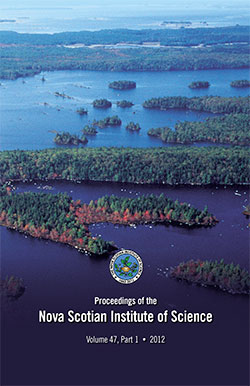THE USE AND INFLUENCE OF SCIENTIFIC INFORMATION IN ENVIRONMENTAL POLICY MAKING: LESSONS LEARNED FROM NOVA SCOTIA
DOI:
https://doi.org/10.15273/pnsis.v47i1.3382Abstract
Governmental organisations produce vast quantities of scientific information on the state of the marine and coastal environment which is often intended to guide policy-making to mitigate or reverse the declining trends in the health of the environment. How scientific information is used and how it influences environmental policy and decision making are however not well understood. The apparent disconnect between the knowledge and information produced by scientists and that used by policy makers is attributed to problems at the science-policy interface. Based on a multi-disciplinary literature review, this paper describes how policy makersseek out and use scientific information within the context of policy design in the 21st century. Best practices for increasing information flows across the science-policy interface are drawn from a study of the awareness, use, and influence of The 2009 State of the Nova Scotia Coast Report in coastal policy making in Nova Scotia.
Strategic or rational approaches to policy making can increase the two-way flow of information across the science-policy interface as it facilitates collaboration among multiple actors in information generation, transmis-
sion, and use. The production, use, and influence of The 2009 State of
Nova Scotia's Coast Report in coastal policy making in Nova Scotia demonstrates the strategic approach to policy making whereby coastal policy is being developed through (i) intergovernmental partnerships, (ii) the use of best available information, (iii) linkages between the policy process and policy output, and (iv) public participation.


